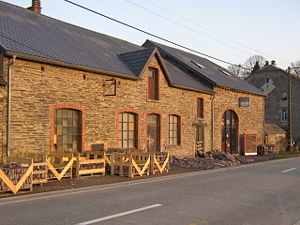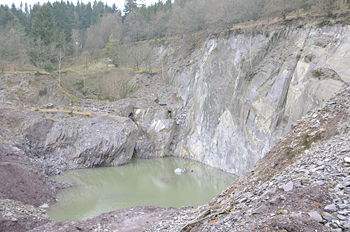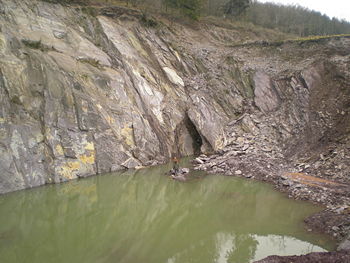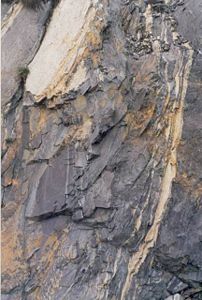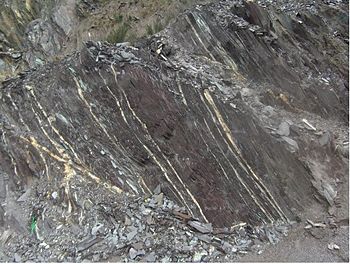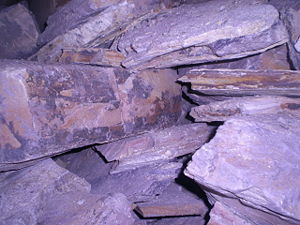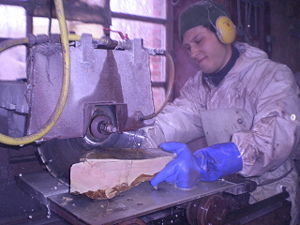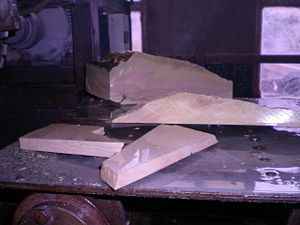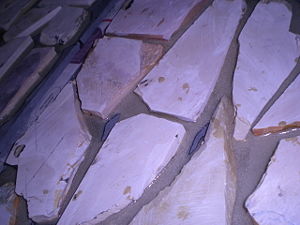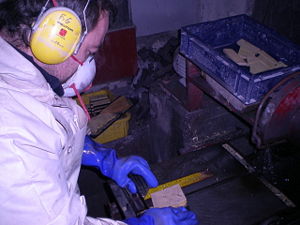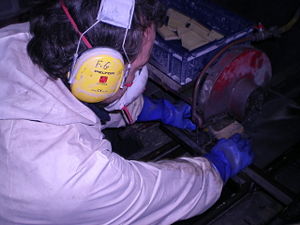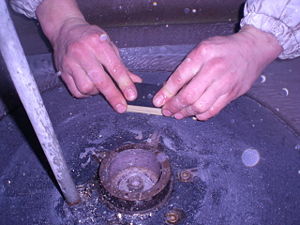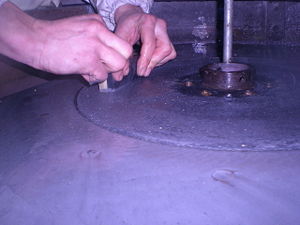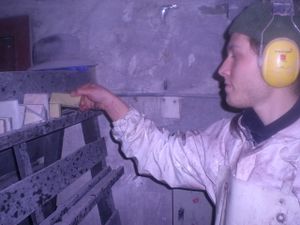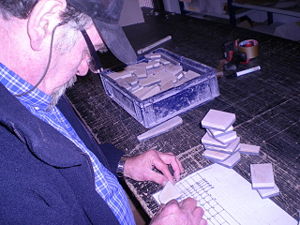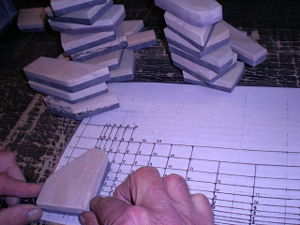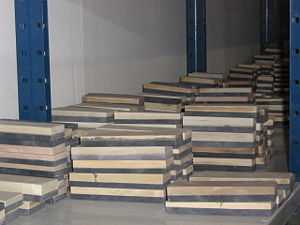Belgian Hones
Contents
Manufacture & Production
Process provided by SRP member ArdennesCoticule[1]
The Atelier
Coticule whetstones have been produced in this building (built in approx. 1865 and located in the Belgian Ardennes) for over 140 years. The left part of the building (2 windows, 1 door and another window) is the main workplace (atelier). This is the place were the raw Coticule rocks are cut up into pieces and the end products (Coticule and BBW whetstones in all sort of sizes) are made. The right part of the building (large arc window with a door in the middle) is our store, storage room and bureau space.
This atelier is also used to produce natural construction stones (like the ones our building is made off). These stones are stored in pallets in front of the building.
The Quarry
Our quarry is located at "Thier del Preu" (which means "height of Preu", Preu is a place name). Our extraction site is approx. 300 meters by 100 meters and we are at a depth of +/- 50 - 60 meters. The quarry is at a 2 km distance from our Atelier. We need to extract approx. 2 tons of rocks to have 1 kg usable Coticule.
The Production of the Coticule Whetstone
- 1. Sawing the Coticule rocks into Coticule plates
These Coticule plates have a thickness between 7 and 14 mm. Sawing these plates is a very important job. It has to be done very careful to maximize the amount and size of Coticule plates. The raw Coticule rocks have cracks, black manganese spots, quartz blocks and other impurities in them so it requires a certain amount of experience and handiness to maximize the good Coticule!
- 2. Gluing the Coticule plates on a black schist
This is the second step in the production of the Coticule whetstone. We often get the question why it's done. The reason is simple! Coticule plates are so brittle that if such a plate falls of a height of 1 meter it will break into several pieces. So we use black Brazilian or Portuguese natural schist as a base to glue the Coticule plates on. This way we have a sturdy whetstone that can handle several shocks!
- 3. Sawing the Coticule - black schist plates
This also is a very important job! This step is determining the final size of a Coticule whetstone (both rectangular and odd shaped stones!). The man doing this job has to look very careful at the Coticule because he needs to cut right through black lines or other faults in the Coticule and so maximizing the surface of Coticule without minor or major faults.
- 4. Polishing the Coticule whetstones
This is the last step of the production. Every Coticule stone is hand polished on a diamond polishing table. Every side of the stone will be polished and the edges will be rounded.
The Storage Room
Every day the production of the previous day will be sorted in to quality grades and sizes. This happens in our storage room.
The following two photos shows how the size of a Coticule bout is determined. This is done by using a sizing chart.
Results
And these are the steps every single Coticule stone in the world has to pass before you can use it to sharpen your beloved straight razor! Every Coticule stone is completely hand made at our atelier so every Coticule stone is a one of a kind!
The production of the BBW (Belgian Blue Whetstone) is the same except the gluing part.
I hope you liked this little explanation and if someone has further question, shoot away!
-Rob Ardennes Coticule
Using a Belgian Whetstone to Sharpen a Straight Razor
For now, use this Guide to Honing for Dummies
Where to Buy
Some websites that currently offer Belgian Coticules and Blue whetstones:
Don't forget to check the SRP Classifieds for great deals on new and used hones!
